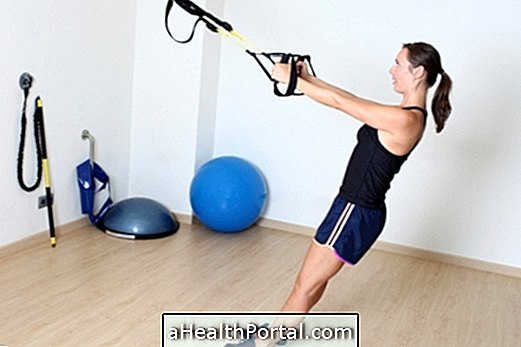Functional training is a method of physical activity performed without the use of gym equipment, which aims to improve physical condition by imitating normal movements from day to day. This type of training slims, and gives a body well outlined and firm in a few weeks of training. In addition, functional training also serves to strengthen the abdomen, lower back, prevent injuries, decrease tiredness and strengthen muscles.
Functional training exercises
The functional training is done with the use of elastic cables, weights of 1 to 3 kg and balls, but always requiring that the practitioner has a good posture while performing the movements. It is not made with normal bodybuilding appliances as found in most gyms.
Some examples of exercises are:
Exercise 1

Lay forward facing the tapes and lean back with arms outstretched and keeping your back straight. Then pull the weight of the body forward with your arms, tightening your shoulder blades and not moving your legs.
Exercise 2

Open your legs shoulder-width apart with one weight in each hand, tilt the body to one side, without moving your legs and keeping your back straight and then to the other side.
Exercise 3

Keep your legs shoulder-width apart and with the ball in your hands, bend your legs and put your hips back, then rise.
Functional training exercises can be done at home, outdoors or even on the beach, for example.
Who can do the functional training
Functional training can be done by athletes, postpartum, sedentary or anyone who is interested in increasing flexibility, thinning and strengthening muscles.
There are no contraindications, because the exercises can be adapted to the individual's need, which means that functional training can be practiced even by elderly people with orthopedic diseases such as arthritis, arthrosis, back pain, herniated disc and others.
























